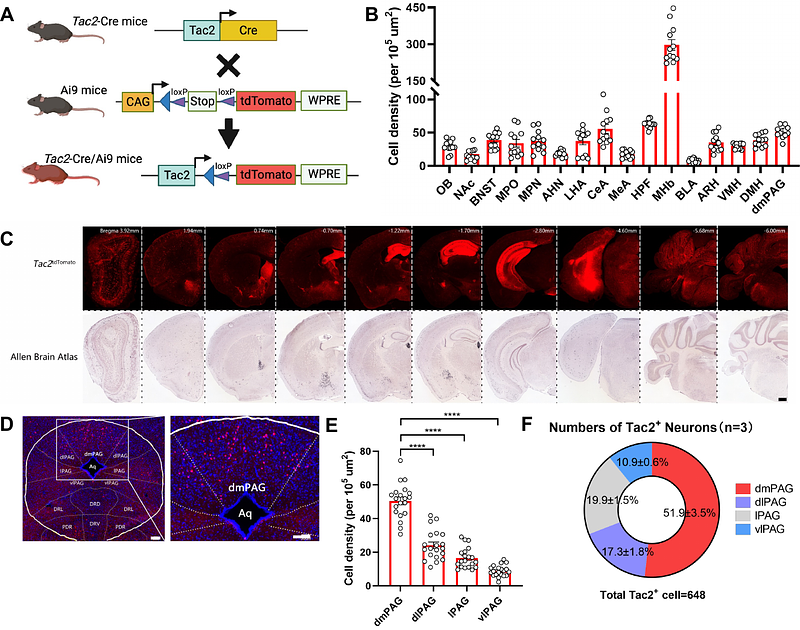A molecularly distinct cell type in the dmPAG regulates intermale aggression behaviors in mice

A molecularly distinct cell type in the dmPAG regulates intermale aggression behaviors in mice
Li, C.-Y.; Miao, C.; Wu, J.; Ge, Y.; Gao, P.; Yin, S.; Zhang, P.; Tian, B.; Chen, W.; Chen, X.-Q.
AbstractThe periaqueductal gray (PAG) has been suggested as a central hub for defensive responses to threatening stimuli and regulation of aggression. However, little is known on the circuitry and molecular mechanisms that govern this regulation. Here, we investigate the role of a molecularly distinct cell type, Taschykinin 2-expressing neurons (Tac2+), located in dorsomedial PAG (dmPAG), in modulating aggression in a mouse resident-intruder model. Using a rabies-assisted input mapping strategy, we found that dmPAGTac2 neurons received monosynaptic input from the ventromedial hypothalamus, a region implicated in mediating fighting behaviors. Whole-brain Fos mapping and in vivo Ca2+ recording in mice revealed that dmPAGTac2 neurons were exclusively activated by fighting behaviors. Further, we manipulated activity of dmPAGTac2 neurons using chemogenetic tools and found that activation of dmPAGTac2 neurons evoked, while inhibition or genetic ablation of dmPAGTac2 neurons suppressed fighting behaviors. To further reveal molecular pathways that govern this fighting behaviors, we profiled dmPAGTac2 neurons using a viral-based translating ribosome affinity purification (TRAP) approach and revealed that fighting behaviors specifically induced enrichment of serotonin-associated transcripts in dmPAGTac2 neurons. Last, we validated these findings by selectively delivering pharmacological agents into the dmPAG through guide cannula and reversed the behavioral outcomes induced by chemogenetic manipulation of dmPAGTac2 neurons. Collectively, we identify that dmPAGTac2 neuron as a molecularly distinct cell type that regulate mouse aggressive behavior in dmPAG region and thus suggest a novel molecular target for the treatment of exacerbated aggressive behaviors in populations that exhibit high-level of violence.